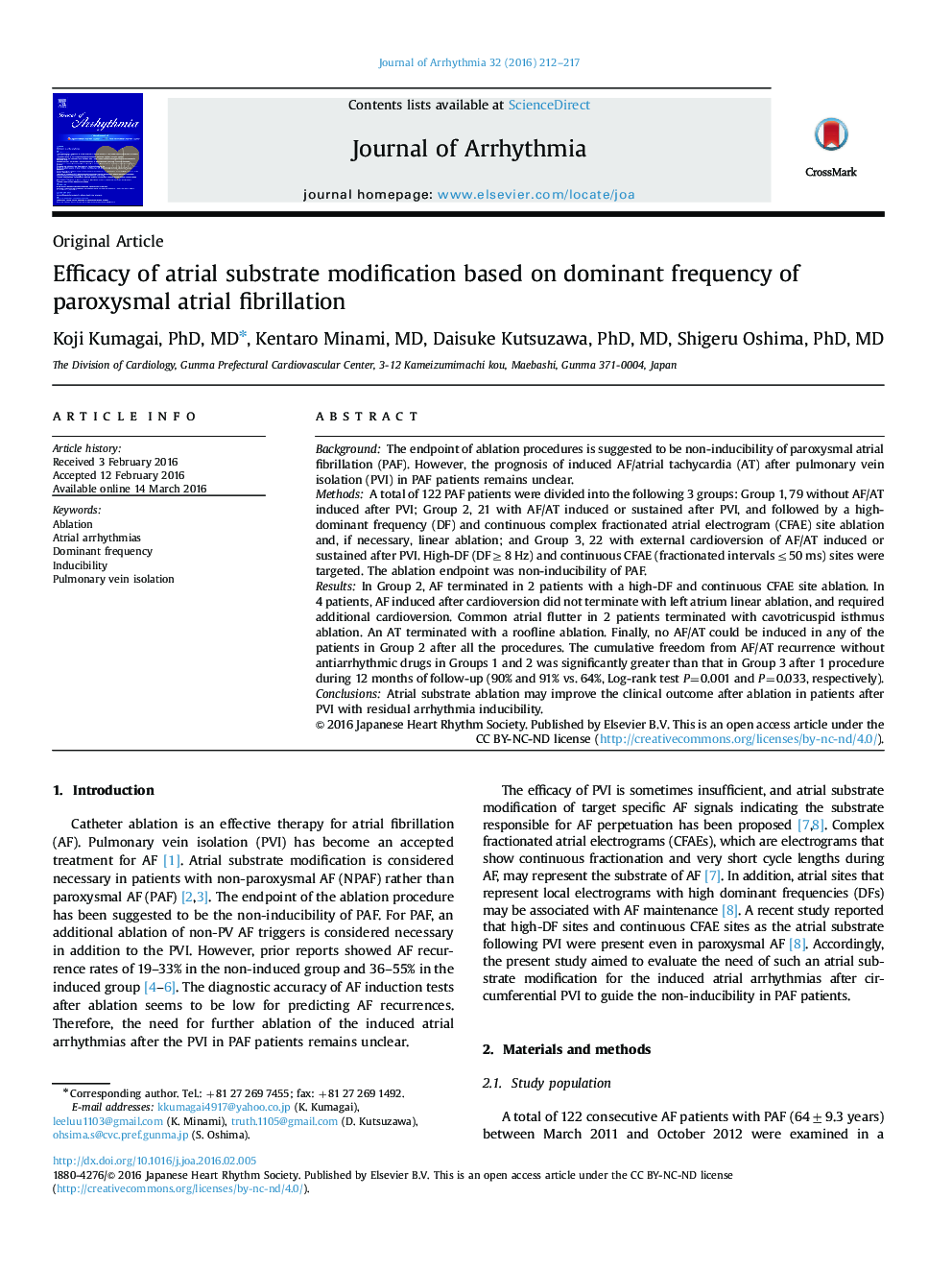| Article ID | Journal | Published Year | Pages | File Type |
|---|---|---|---|---|
| 2957499 | Journal of Arrhythmia | 2016 | 6 Pages |
BackgroundThe endpoint of ablation procedures is suggested to be non-inducibility of paroxysmal atrial fibrillation (PAF). However, the prognosis of induced AF/atrial tachycardia (AT) after pulmonary vein isolation (PVI) in PAF patients remains unclear.MethodsA total of 122 PAF patients were divided into the following 3 groups: Group 1, 79 without AF/AT induced after PVI; Group 2, 21 with AF/AT induced or sustained after PVI, and followed by a high-dominant frequency (DF) and continuous complex fractionated atrial electrogram (CFAE) site ablation and, if necessary, linear ablation; and Group 3, 22 with external cardioversion of AF/AT induced or sustained after PVI. High-DF (DF≥8 Hz) and continuous CFAE (fractionated intervals≤50 ms) sites were targeted. The ablation endpoint was non-inducibility of PAF.ResultsIn Group 2, AF terminated in 2 patients with a high-DF and continuous CFAE site ablation. In 4 patients, AF induced after cardioversion did not terminate with left atrium linear ablation, and required additional cardioversion. Common atrial flutter in 2 patients terminated with cavotricuspid isthmus ablation. An AT terminated with a roofline ablation. Finally, no AF/AT could be induced in any of the patients in Group 2 after all the procedures. The cumulative freedom from AF/AT recurrence without antiarrhythmic drugs in Groups 1 and 2 was significantly greater than that in Group 3 after 1 procedure during 12 months of follow-up (90% and 91% vs. 64%, Log-rank test P=0.001 and P=0.033, respectively).ConclusionsAtrial substrate ablation may improve the clinical outcome after ablation in patients after PVI with residual arrhythmia inducibility.
